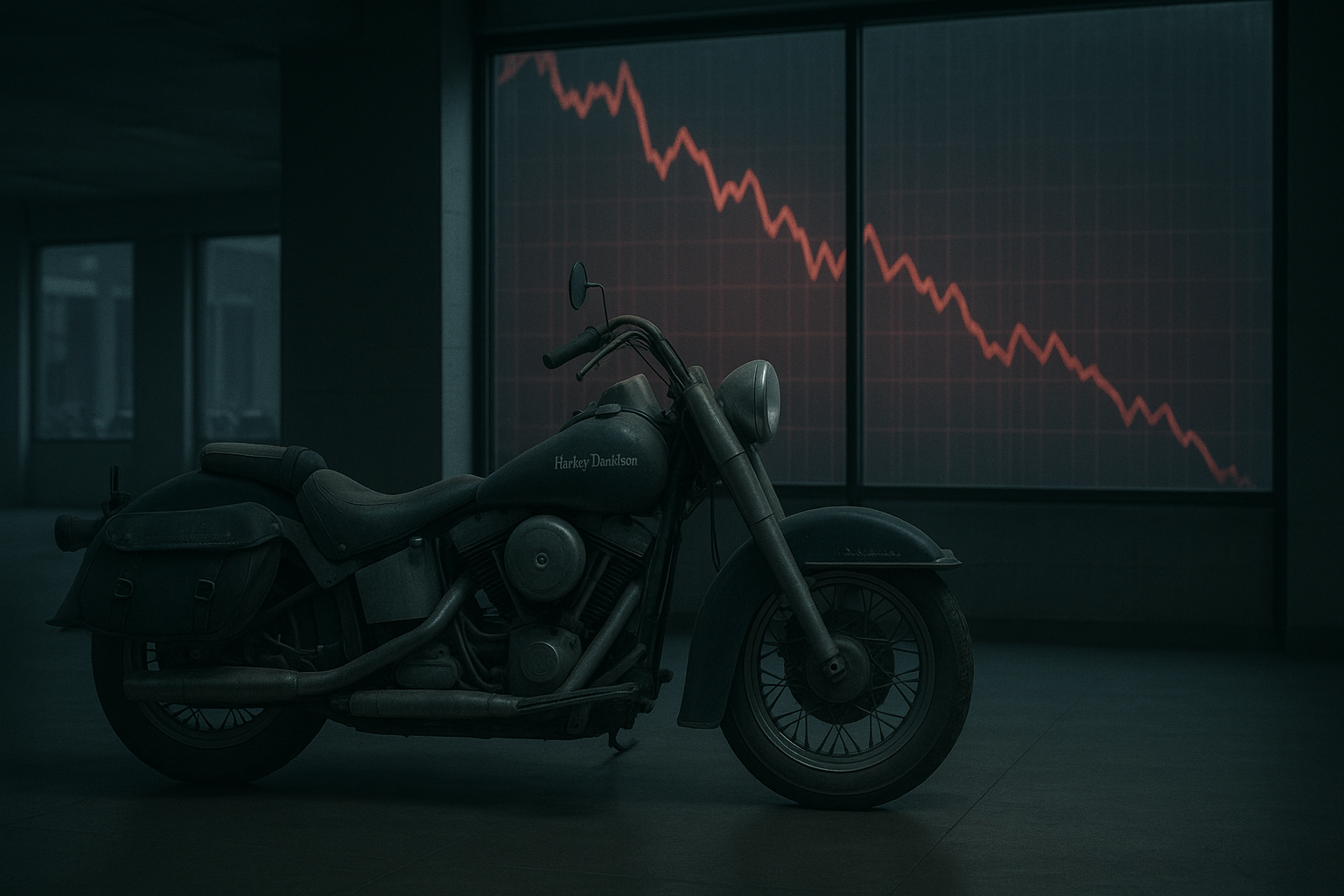Harley-Davidson motorcycles once roared with cultural relevance. Today? That distinctive rumble sounds increasingly faint to some market watchers — including one investor who's putting serious money on the company's continued decline.
I recently came across an analysis from a particularly bearish investor who's taken a significant short position against the motorcycle giant, betting that HOG (the company's aptly chosen ticker symbol) will see its stock price tumble further in coming years. The investor has purchased $23 puts expiring in January 2027, essentially wagering that Harley's problems aren't just temporary setbacks but structural failings that will drive the stock below that threshold.
The core of their argument? Demographics, plain and simple.
"The gray beard problem," as they call it, is impossible to ignore if you've been anywhere near a Harley gathering lately. The company's core riders are, well... aging out of the market. Literally. And despite various attempts to attract younger riders, Harley showrooms reportedly have "all the vibrancy of a funeral parlor" according to this investor.
(Having attended several motorcycle shows myself in recent years, I can confirm the demographic skew is striking. At one event in Milwaukee, I counted perhaps three riders under 35 among dozens of middle-aged and older enthusiasts.)
But it's not just about who's riding these days. It's about economic reality.
Look, motorcycles—particularly those with $40,000 price tags—represent peak discretionary spending. When economic uncertainty looms, that chrome-covered dream machine quickly slides from "must-have" to "maybe someday" status. The luxury problem becomes especially acute during periods like our current one, where consumer confidence wobbles from month to month.
Then there's the international trade situation.
Tariffs have created a particularly thorny problem for Harley. The company's attempts to navigate these complications—including moving some production overseas—has managed to simultaneously anger their "American-made" traditionalists while failing to solve their fundamental cost structure problems. Talk about losing on both ends.
The revenue trends tell their own story. Four consecutive quarters of disappointing sales isn't a coincidence—it's a pattern that suggests something more troubling than a temporary slump.
And we haven't even addressed the elephant in the room: motorcycles are dangerous. Obviously, right? But cultural attitudes toward risk have shifted dramatically in recent decades. The romance of the open road increasingly competes with the pragmatic assessment of mortality rates. Everyone who rides knows someone who's had a serious accident... and that existential math becomes harder to ignore with each passing year.
Harley isn't completely asleep at the handlebars, though. Their electric motorcycle initiatives show some recognition of changing market dynamics. But to this investor, these efforts seem "incremental and late rather than revolutionary and timely." It's a bit like "watching someone patch a tire while ignoring that the engine is on fire."
Could this bearish perspective be wrong? Certainly. Perhaps a new generation will suddenly develop an appetite for expensive, loud motorcycles. Economic headwinds might dissipate. Harley might execute a dramatic turnaround strategy that defies expectations.
But markets reward probability, not possibility. And right now, the probability seems to favor the bears.
The most telling observation might be the simplest one: Harley's customer base is literally aging out of existence, while new customers remain stubbornly elusive. For a company built on American iconography, that's a particularly cruel irony—becoming such a perfect symbol of Americana that it's failing to evolve beyond it.
Whatever happens, this investor is putting their money where their mouth is. Those January 2027 puts represent a conviction that Harley's road ahead looks increasingly rough.
